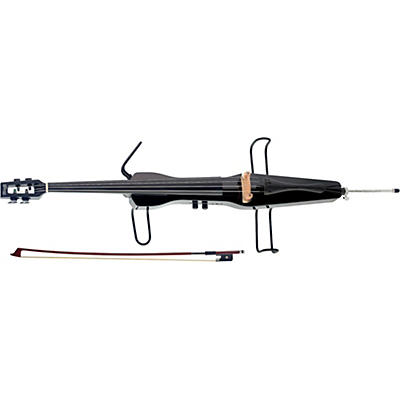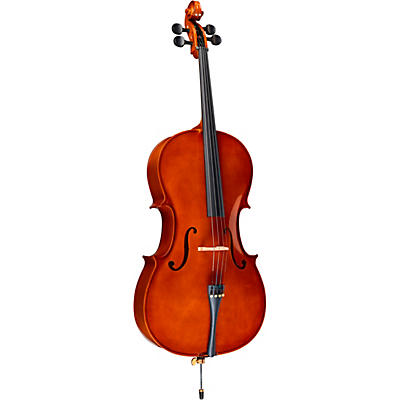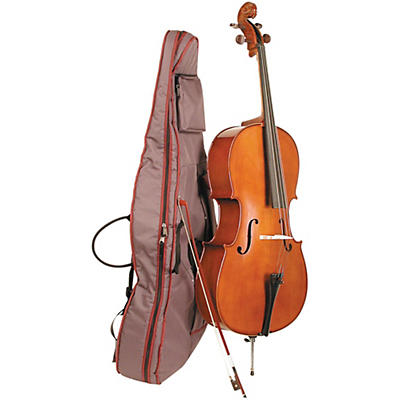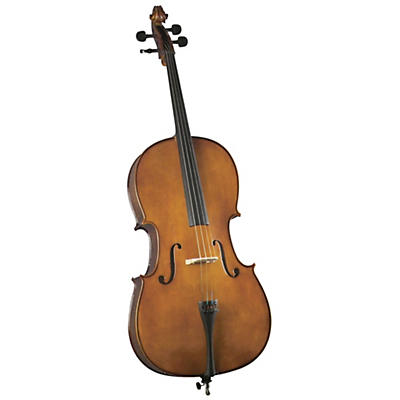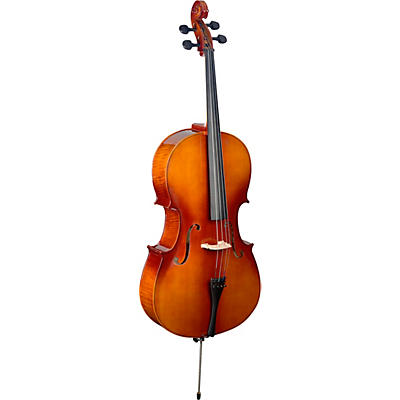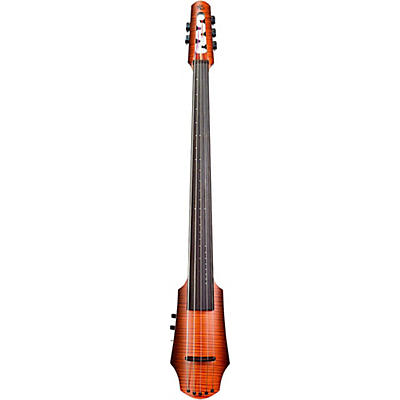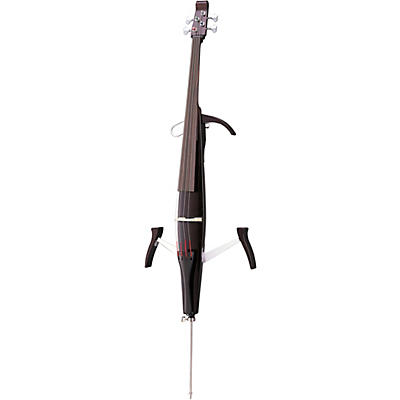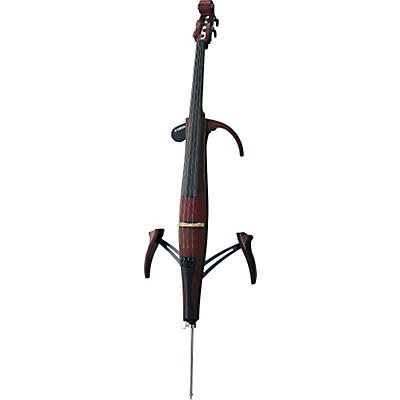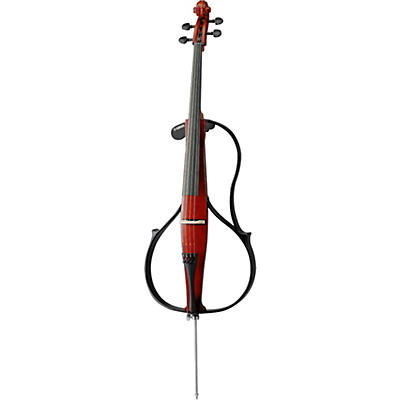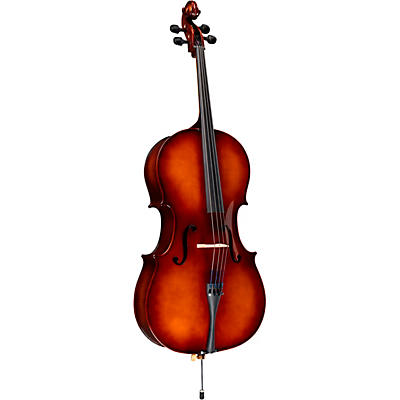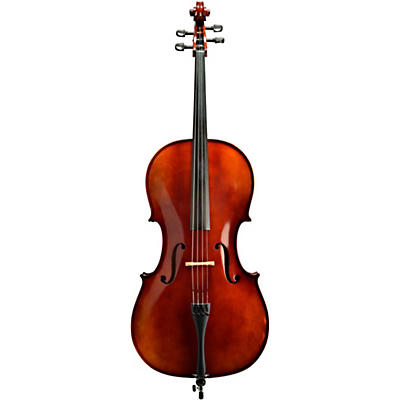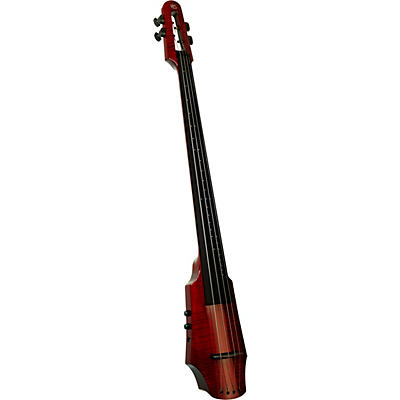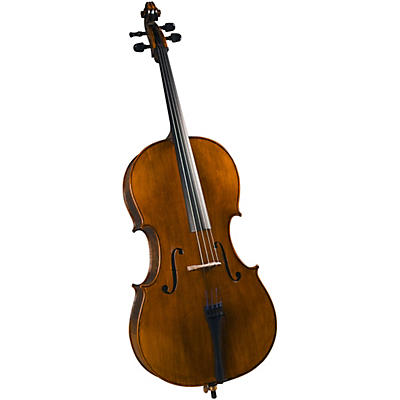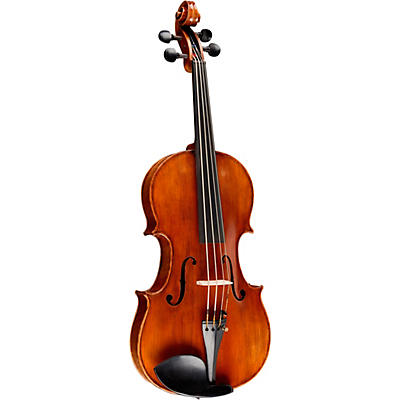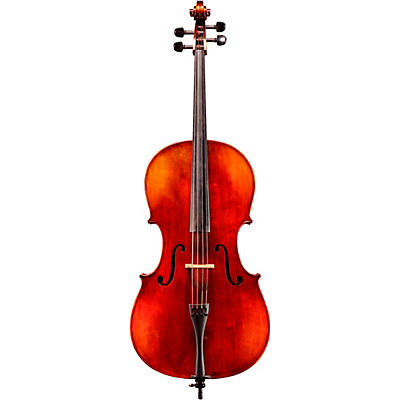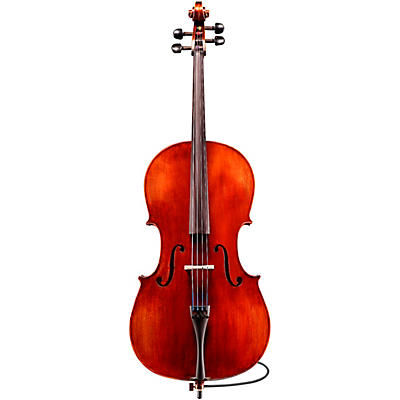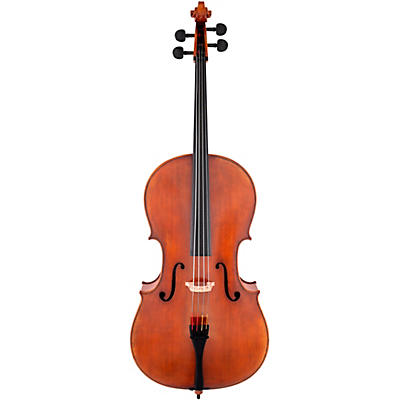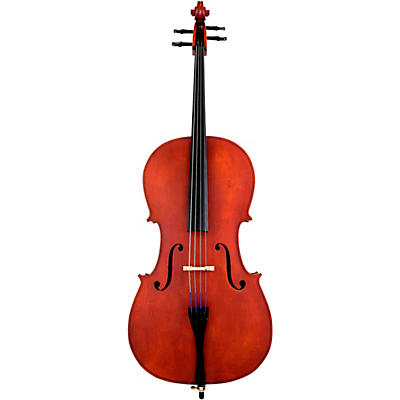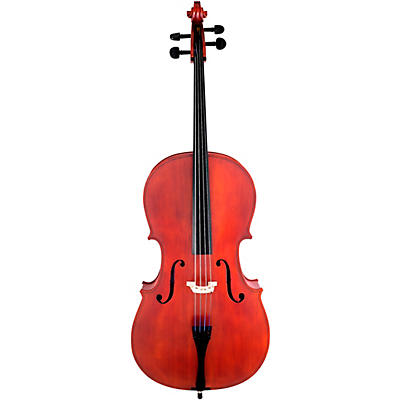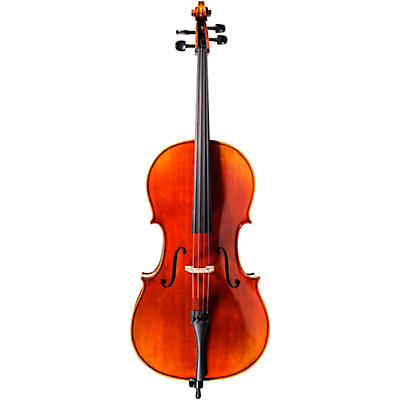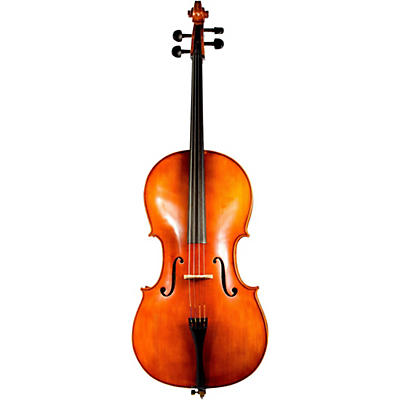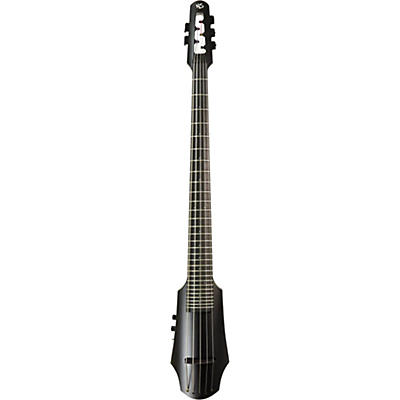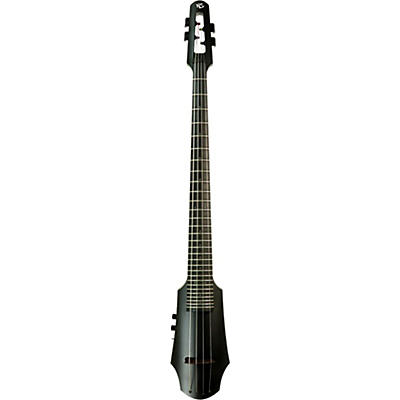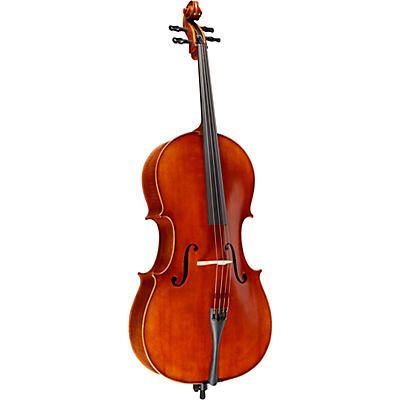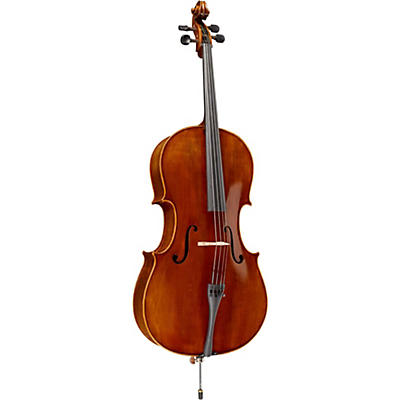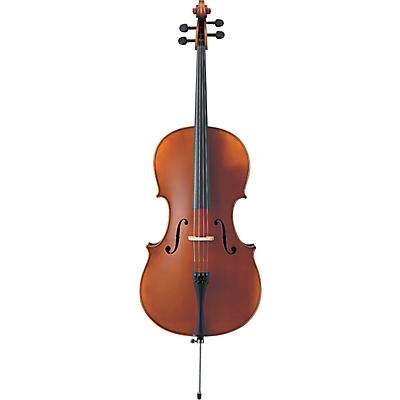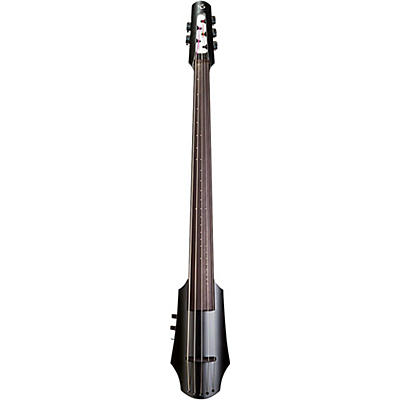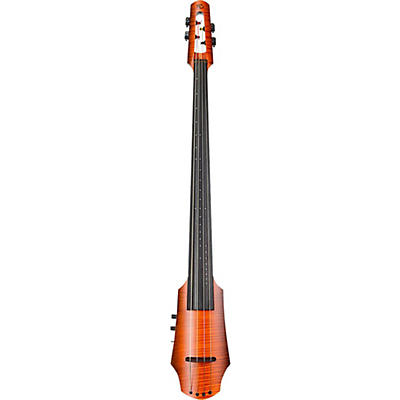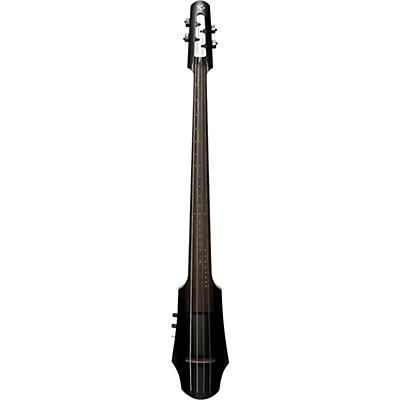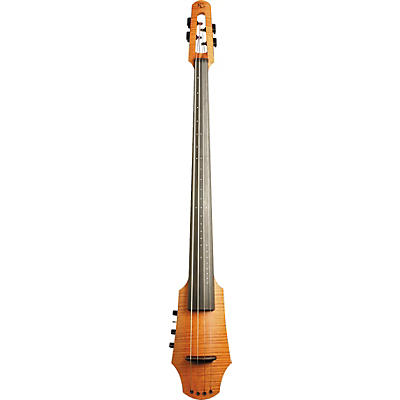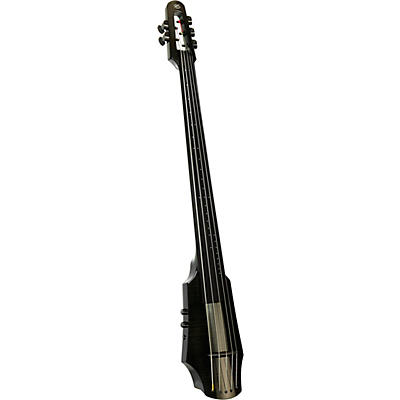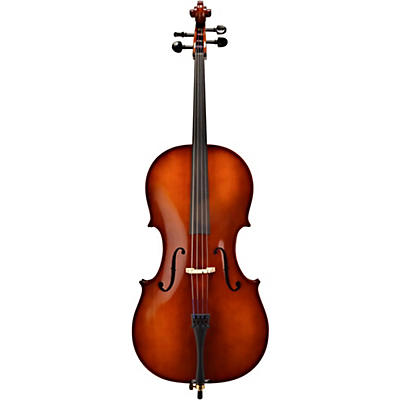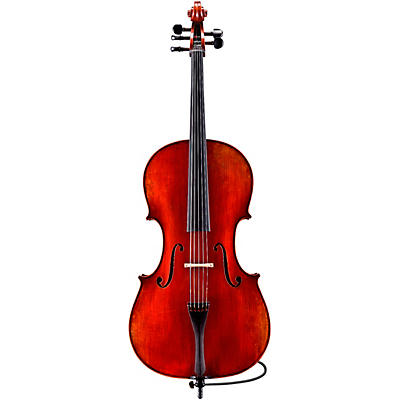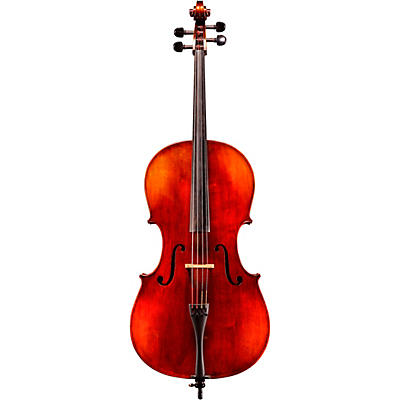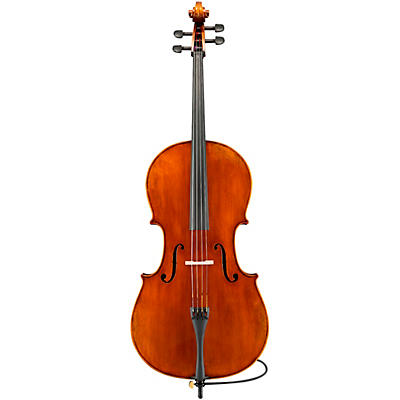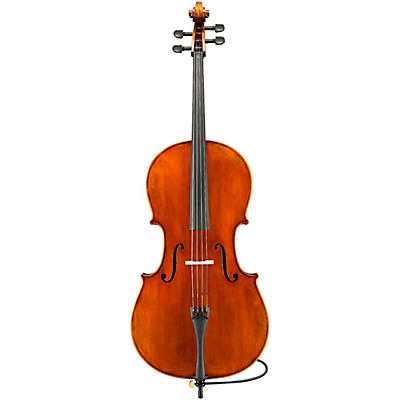Filters
Cellos
(64 Items)
Price Drop
Price Drop
48-Month Financing*
Product Price
$849.99
Product Price
$1,149.99
$1,069.49
Product Price
$899.99
$719.99
New
New
Pre-Order
Pre-Order
Pre-Order
Product Price
$2,849.00
from
Product Price
$3,084.00
$2,664.00
Price Drop
New
New
New
New
About Cellos
The cello is sometimes described as the most human of all instruments. It resides in the pitch range of the male voice and is played with a bodily intimacy that is unique among instruments. Violins and violas are held, basses are addressed, drums are approached and pianos are sat at, but cellos are embraced.
Musician's Friend offers an exquisite selection of cellos and cello outfits from time-honored brands like Bellafina, Yamaha, Karl Willhelm, and Englehardt. Students, intermediate players, and professional cellists alike will find electric cellos; 4-, 5-, and 6-string acoustic cellos; as well as 1/2-sized, 3/4-sized, and full-sized cellos. The cellos you'll find here are exceptionally well-built and offered in every price range.
The History of the Cello
The cello was developed on the heels of the violin in the mid to late 16th century, though not much composition was directed toward it at the time. Most musicians of that era attracted to this lower-pitched instrument would simply play violin pieces in the lower octave (the cello is one octave lower than the violin). Depictions of string instruments that approximate the dimensions of violins, violas and cellos have been found dating to about that time. The first well-known cello maker was Andrea Amati, who made cellos for King Charles IX of France.
The cello was perfected by the same artisan group that perfected the violin—disciples and descendants of the great one, Andrea Amati. Antonio Stradivari, father of the famed Stradivarius violins, served as apprentice to Amati’s grandson, Nicolo Amati. Nicolo’s shop produced cellos that closely resemble cellos of today. The first serious compositional effort to explore the possibilities of the cello was Bach’s “Six Unaccompanied Cello Suites,” though these pieces were not widely known in Bach’s lifetime.
Other watershed moments for the cello include the invention of wire-wound strings in the middle of the 18th century, which permitted greater dynamic range. It also allowed instrument bodies with smaller dimensions to achieve higher volume. In the “why didn’t they think of it sooner” department, the cello endpin was added beginning in the late 19th century. Before that, cellists had to make a cradle of their feet to keep the butt of the instrument off the floor.
Cello parts started to become an integral aspect of orchestral works beginning in the middle of the 18th century. Around the same time, works for string quartet began to emerge. Franz Josef Hayden is largely considered the father of the string quartet. He established the standard instrumentation of the string quartet (two violins, viola and cello), as well as its standard form (allegro, andante, minuet and finale).
The string quartet is where the cello really shines. Composers within the string quartet form must achieve an equal distribution of roles, rather than having the cello reside in a mostly harmonizing and support function to the violins. Absent the explosion of percussion, the bombast of brass and the wash of woodwinds, that human sound of strings is revealed in all of its joy and anguish in a good string quartet composition. Some of the most enduring classical pieces today are string quartets, notably Air on the G String by Johann Sebastian Bach, Canon in D by Johann Pachelbel, and Four Seasons by Antonio Vivaldi.
Parts of a Cello
The widest part of the cello is called the lower bout. The body’s thinnest part, where it is cut away to accommodate the bow, is called the waist or center bout. The upper bout is where the cello’s neck attaches to the body. A pair of holes resembling an antiquated cursive letter “F” are located inside the center bout. F-holes are the aperture through which much of the sound of a cello is produced. Amati, Stradavari and other makers settled on an F-hole shape and position that has endured for centuries. An endpin is attached to butt of the body, which elevates the instrument to appropriate playing height.
The cello’s neck system consists of a scroll, peg box, pegs, nut, neck and fingerboard. The scroll is located at the top of the neck. It can be simple or ornate, and is sometimes used as a sort of maker’s mark. With custom instruments, it was an opportunity for the builder to express an extra level of craftsmanship.
The pegs tighten and loosen the strings to their correct pitch, and the nut provides one end of the string’s suspension mechanism. The neck attaches to the violin’s body, and a fingerboard is attached to the upper side of the neck. A tailpiece anchors the strings at the bottom of the cello. The bridge is equipped with fine-tuners for small adjustments during performance.
The Cello Today and Getting Started
Contemporary classical has a few of its own “rock stars,” one of whom is cellist, Yo Yo Ma. His unassuming nature, broad intelligence and natural likability, along with his breathtaking virtuosity, have combined to propel him to international celebrity. Other prominent cellists include Mstislav Rostropovich, Mischa Maisky and Jacqueline du Pré.
Most string instrument players find their path to music through school systems or family exposure. In both cases, finding the right instrument to start on and progress with is an important decision. Prominent brands include Bellafina, Stenton, Cremona, Ren Wei Shi and Knilling. Most can be purchased as outfits that include a case, bow, rosin and care products. For smaller hands, ¾, ½ and ¼ sizes are also available.
Excellent student cello options include the Bellafina Musicale, Prodigy and Overture series. Upper-end student models offer better hardware and more select woods. Consider the Maple Leaf MLS 140 Apprentice, the Ren Wei Shi Model 7000 or the Knilling Bucharest in the better student model category.
It is a poor carpenter who blames his tools though, and any of the brands represented here are set up to Music Educator Nation Convention standards. The MENC standards provide a framework for basic playability, so your cello is guaranteed to be set up and ready to go upon delivery. From there, it’s all up to you.





































































































































